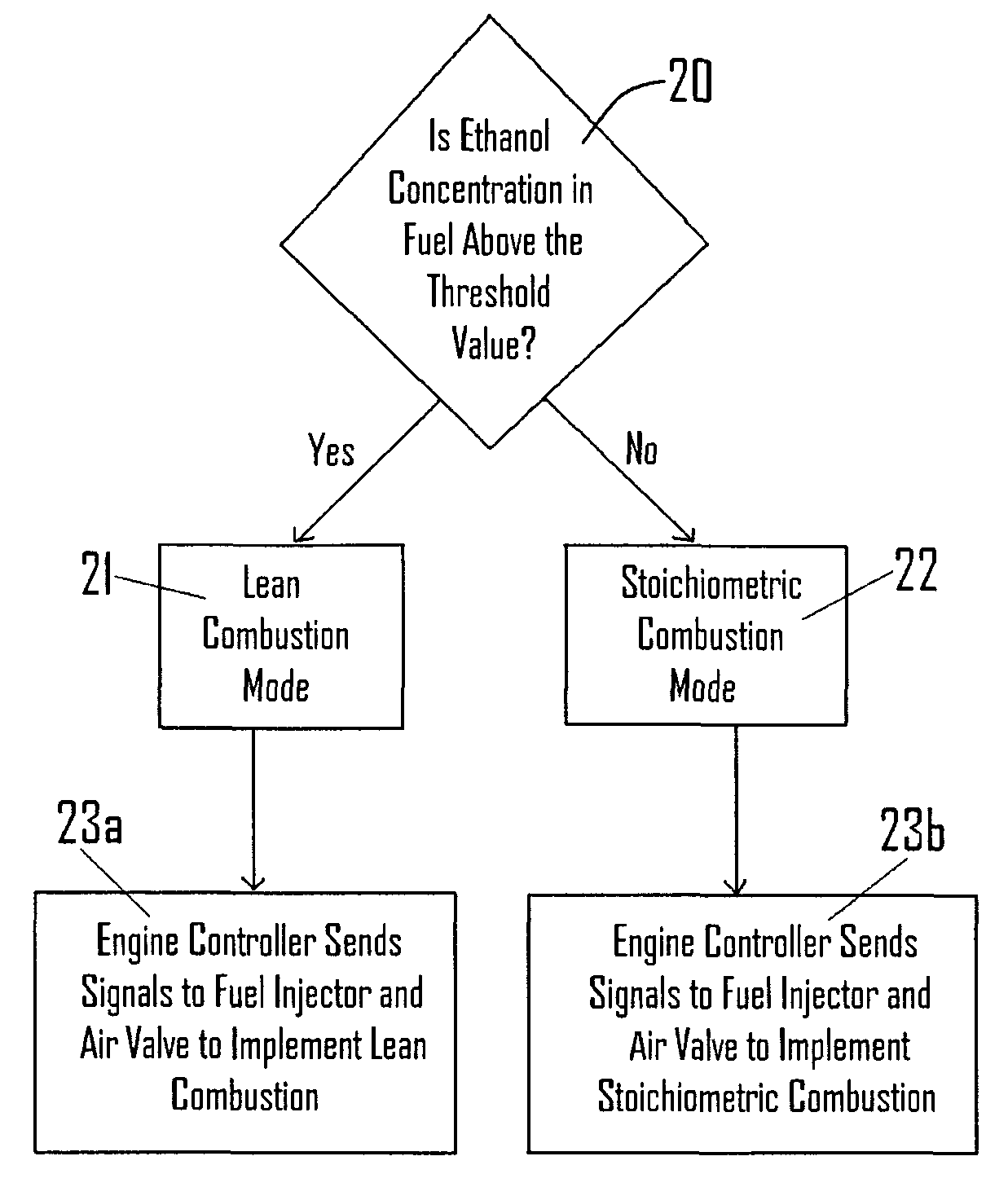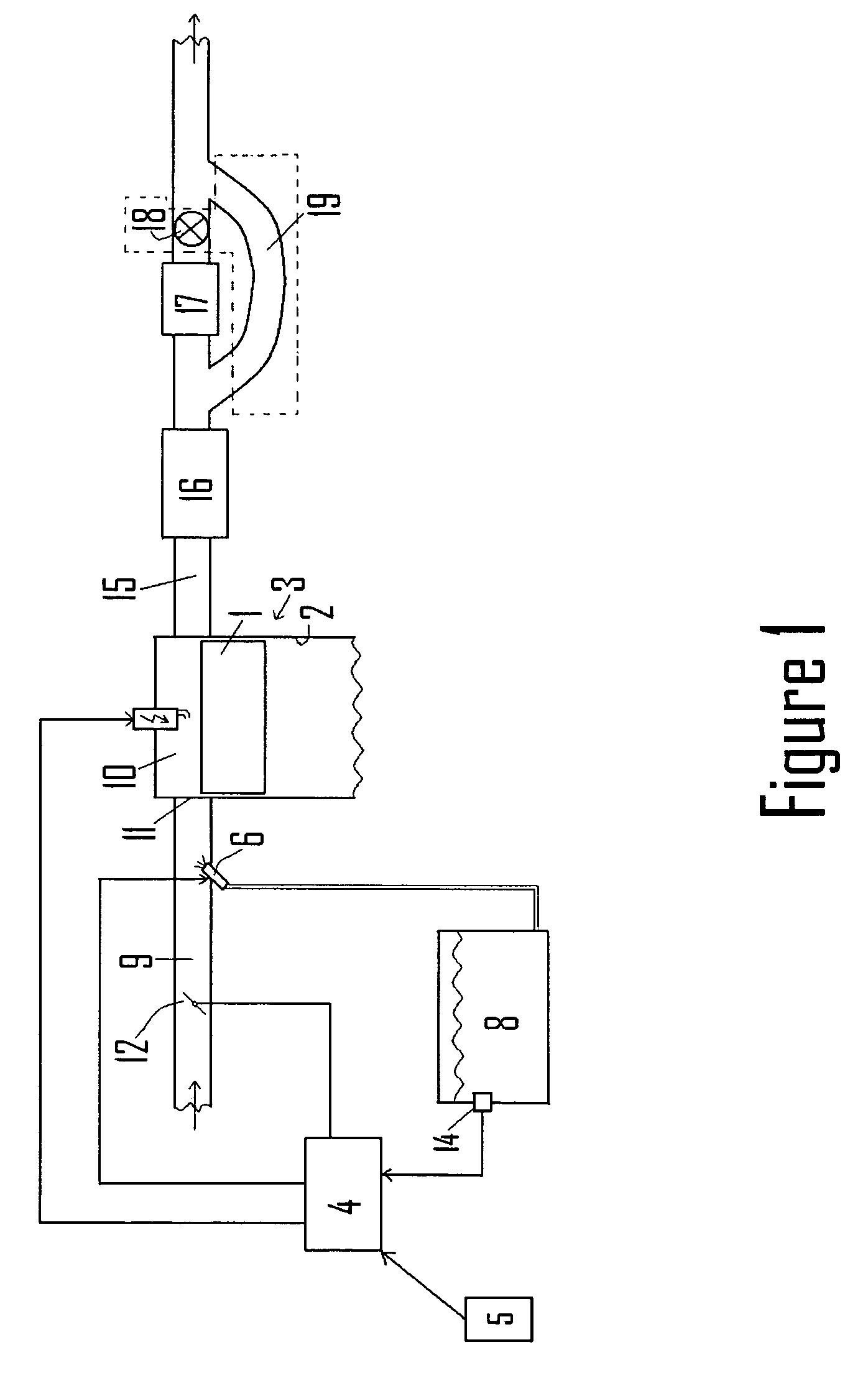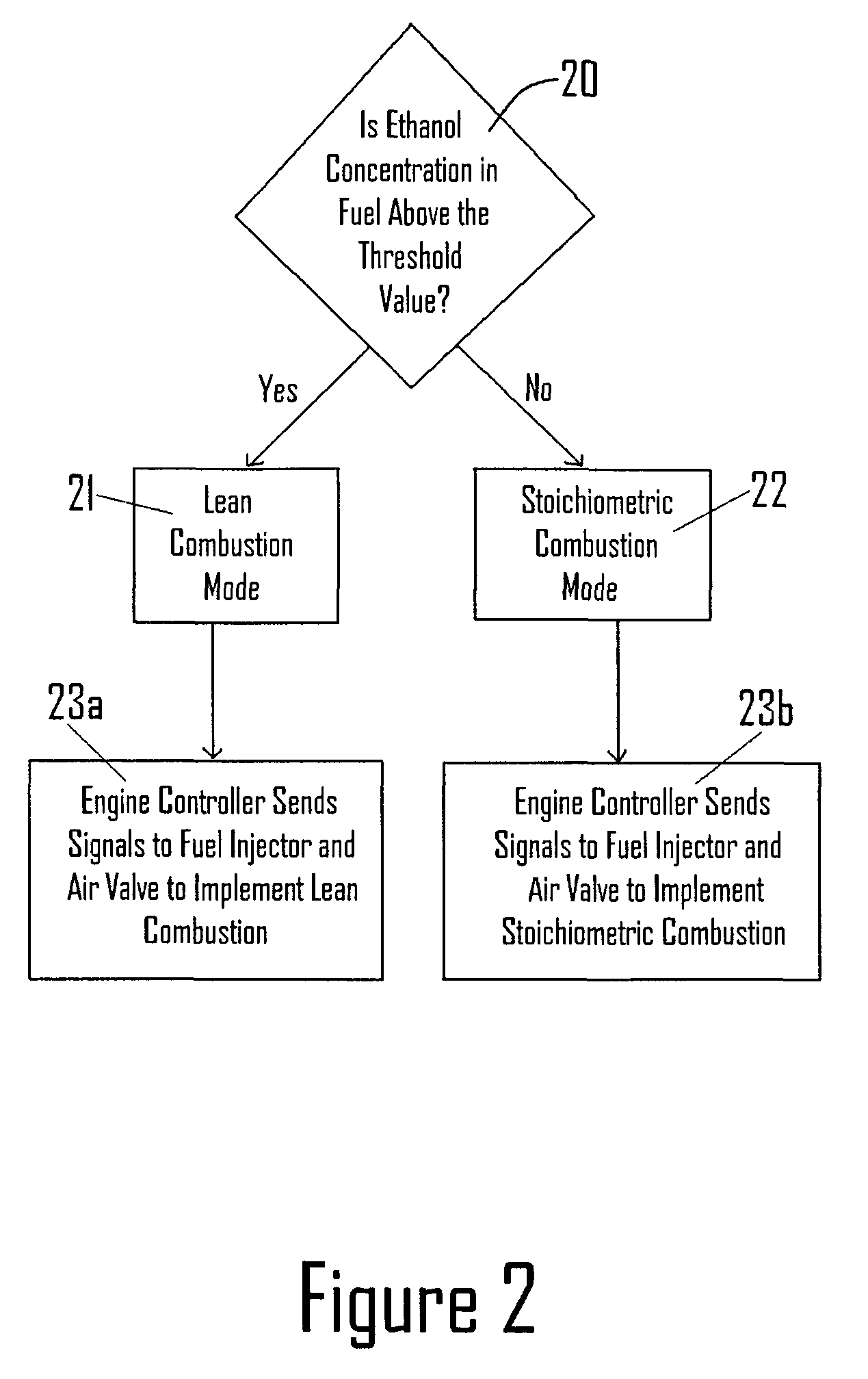Flex fuel internal combustion engine system
a technology of internal combustion engine and flex fuel, which is applied in the direction of machines/engines, electric control, mechanical equipment, etc., can solve the problems of inability to commercialize gasoline engines that operate lean, difficulty in treating emissions of lean burn engines, and lack of vehicle range per tank of fuel, etc., to achieve the effect of efficient combustion of e85 fuel
- Summary
- Abstract
- Description
- Claims
- Application Information
AI Technical Summary
Benefits of technology
Problems solved by technology
Method used
Image
Examples
Embodiment Construction
FIG. 1 shows a block diagram of a combustion system with engine control for a cylinder in a reciprocating piston engine, such as (but not limited to) a conventional flex fuel (gasoline / E85) internal combustion engine system for a motor vehicle. The engine structure itself, and flex fuel internal combustion engine systems in general, are well-known in the art, and thus will not be fully redescribed here.
Referring to FIG. 1, piston 1 reciprocates within cylinder 2 of internal combustion engine 3 in conventional fashion. Engine controller 4 receives various conventional inputs for operation (e.g., engine rpm, accelerator pedal position, etc), which are generically abbreviated on FIG. 1 as input(s) 5. Fuel injection device 6 is fluidly connected via fuel line 7 to fuel tank 8. Fuel and air enter combustion chamber 10 through port 11 for combustion. While fuel injection device 6 is shown in FIG. 1 as injecting fuel into air intake pipe 9, the fuel injection device could instead, or in ad...
PUM
 Login to View More
Login to View More Abstract
Description
Claims
Application Information
 Login to View More
Login to View More - R&D
- Intellectual Property
- Life Sciences
- Materials
- Tech Scout
- Unparalleled Data Quality
- Higher Quality Content
- 60% Fewer Hallucinations
Browse by: Latest US Patents, China's latest patents, Technical Efficacy Thesaurus, Application Domain, Technology Topic, Popular Technical Reports.
© 2025 PatSnap. All rights reserved.Legal|Privacy policy|Modern Slavery Act Transparency Statement|Sitemap|About US| Contact US: help@patsnap.com



